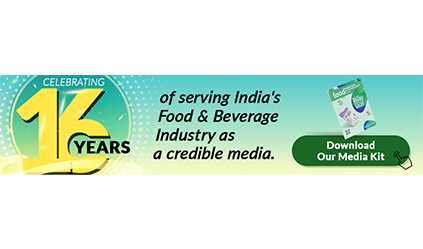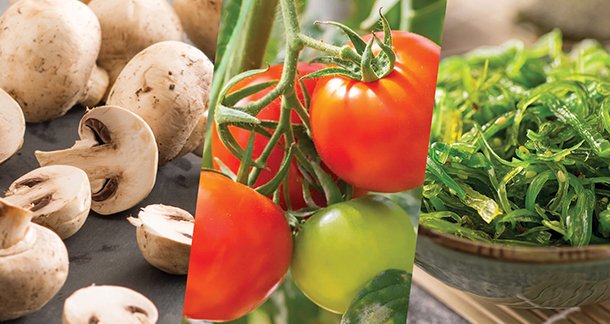Introduction
Umami, the fifth basic taste along with sweet, salty, sour, and bitter, plays a significant role in nutrient detection. It signals the presence of amino acids in proteins. Kikunae Ikeda, in 1908, discovered umami, which has been primarily linked to glutamate—found in meat, cheese, seafood, and vegetables. The umami taste is amplified by synthetic compounds such as 5’-nucleotide monophosphates, inosine 5’-monophosphate (IMP), and guanosine 5’-monophosphate (GMP). Umami acts as a natural flavor enhancer, enriching and balancing food profiles. MSG, the most common umami compound, has been widely used in the food industry to improve palatability. Umami can enhance salt perception, which allows for reduced sodium content without compromising taste. Thus, umami can be a valuable ingredient in developing healthier, low-sodium products. While its appeal varies across individual taste preferences and cultural origins, its functionality and flavor enhancement continue to expand its use in food formulation.
Sources of Natural Umami
Umami substances are mainly classified into monosodium glutamate (MSG), disodium guanylate (GMP), and disodium inosinate (IMP). The umami taste intensifies when glutamate is combined with nucleotides like inosinate. These compounds occur both naturally and in synthesized forms and can be studied for their flavor-enhancing characteristics. Foods rich in umami include vegetables (potato, tomato, mushroom, cabbage, soybean, carrot), seafood (fish, prawn, crab, oyster, seaweed, sea urchin, clam, and scallop), meats (beef, chicken, pork), and cheeses (parmesan, cheddar). Glutamate is abundant in fermented Asian sauces, inosinate in meat and seafood, and guanylate in mushrooms. Removing umami compounds diminishes the distinctive savory taste and flavor of these foods. Seaweed (kombu, nori, wakame) has high levels of glutamic acid. Cheeses such as parmesan, Roquefort, cheddar, and gouda release free glutamate as proteins break down. Fermented foods release glutamic acid, and meats rich in inosinate synergize with glutamates, further enhancing the umami taste.
Synthesized Umami Taste
Monosodium glutamate, disodium inosinate, and disodium guanylate (GMP) can be synthesized in laboratories. MSG is derived by fermenting starch, sugarcane, molasses, or corn using Corynebacterium glutamicum, which converts carbohydrates into glutamic acid. This is later neutralized with sodium hydroxide to form MSG. Disodium inosinate is extracted from meat or fish (e.g., sardines) or produced via fermentation using Bacillus or Brevibacterium. Disodium guanylate is obtained from mushrooms or yeast, or by fermenting glucose with bacterial cultures. These compounds are often combined to intensify the umami flavor. Yeast extracts also provide umami through autolysis or enzymatic hydrolysis, releasing glutamates and nucleotides. Hydrolyzed vegetable proteins from soybeans, wheat, or corn similarly yield free glutamate, resulting in an umami taste.
Demand of Umami as Flavor Enhancer in India
Umami peptides—short-chain amino acids rich in glutamate—are synthesized to activate receptors (T1R1 and T1R3) that detect L-amino acids like glutamate and contribute to the perception of savory flavor in the food industry. These peptides mainly consist of glutamate-rich dipeptides, tripeptides, and oligopeptides. They are produced via enzymatic or acid hydrolysis and fermentation and are often combined with IMP, GMP, or fatty acids to enhance the savory profile in foods.
The Indian umami flavor market was valued at USD 448.7 million in 2024 and is expected to grow at a CAGR of 8.6% from 2025 to 2030. Growth is driven by rising culinary experimentation, increasing home-cooking trends, and the growing demand for plant-based, umami-rich ingredients such as mushrooms, tomatoes, and seaweed.
The market is segmented into synthetic flavors (holding a 61.3% share in 2024) and natural flavors, which are expected to grow at a CAGR of 10%, reflecting a strong consumer preference for clean-label, additive-free products.
Powdered umami flavors dominate the category with a 51.3% market share due to their versatility and long shelf life, while umami pastes are gaining popularity, growing at a CAGR of 7.5%, as a convenient, ready-to-use solution.
The food and beverage sector is the largest application segment, with increasing interest in umami-rich snacks and gourmet home cooking. Meanwhile, the pet food and supplements segment is also expanding, with a CAGR of 10.5%, as umami compounds improve palatability and acceptability for pets.
Overall, the demand for umami continues to rise, blending global culinary influences with traditional Indian flavors, and aligning with health-conscious, convenience-driven consumer preferences.
Benefits and Limitations of Umami
|
Aspect of umami |
Benefits |
Demerits |
|
Flavor enhancement |
Deepens and enhances taste, making food more savory and palatable |
Overuse can lead to taste fatique or overpowering flavors |
|
Sodium reduction |
lower salt content while maintaining strong taste |
May not fully replace salt in all formulations |
|
Cost effectiveness |
Reduces reliance on expensive ingredients (eg. Meat extract, aged cheese) |
Can be used to mask low-quality ingredients in processed foods |
|
Regulatory and health safety |
MSG and natural umami enhancers are approved as safe by FDA, WHO and EFSA |
MSG is still controversial due to misconceptions about health effects |
|
Culinary versatility |
Used in a wide range of cuisines (Asian, western, Mediterranean etc) |
High MSG content leads to Chinese restaurant syndrome |
About the Author
By Dr. R. Dakshayani1, M. Ramu2and Dr. R. Jagan Mohan3,
1 SRF, NIFTEM-T.
2JRF, NIFTEM-T.
3 Dean Student Welfare, NIFTEM-T.



